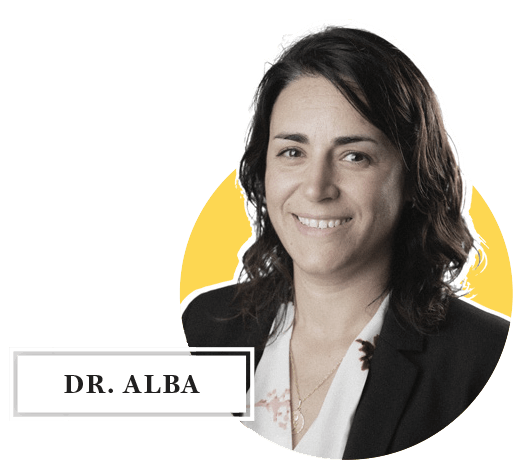THE BENEFITS OF PRECISION MEDICINE
Understanding the mechanisms of disease
Although cardiologists have a good understanding of how cardiac diseases or disorders manifest themselves and how to treat them, the genetic or molecular mechanisms underlying those diseases aren’t as clearly understood. Having the ability to analyze large amounts of data using artificial intelligence is a step toward a better understanding.

Dr. Phyllis Billia, cardiologist, Peter Munk Cardiac Centre Research Lead and Co-Director of the Peter Munk Cardiac Centre Cardiovascular Biobank, explains: “Disease modelling will [enable us] to develop a better understanding of pathogenesis, or what underlies the disease process. Until we have a better understanding of the heart disease process, we are unable to target the genetic problem.”
Finding or developing the right treatments
Once cardiologists know the underlying cause of a disease, they are better able to target treatments to subpopulations based on their disease profile or lifestyle attributes.

Dr. Vivek Rao, head of the division of cardiovascular surgery at the Peter Munk Cardiac Centre and the Peter Munk Cardiac Centre Chair in Advanced Cardiac Therapeutics, hopes to use precision medicine to tailor blood-thinning medication doses for his patients after surgery. Those medications are given at a low dosage after surgery, and that dosage is gradually increased over time until the medication has the desired effect. But some people are sensitive to the medication and can have a bad reaction, while others are more resistant and it takes a long time to get to a dosage that works. Dr. Rao hopes to find the genes associated with sensitivity and resistance, so that his patients can get the right dose right away.

Dr. Thomas Forbes, division head of vascular surgery and the R. Fraser Elliott Chair in Vascular Surgery at UHN, wants to get to the point of predicting a patient’s individual outcome following endovascular aneurysm repair. According to Dr. Forbes, the standard, quoted risk of complication following surgery is approximately 1.6 per cent, but this number fluctuates greatly between patients. “Just like not all patients [respond to Aspirin] because of their genome, not all patients respond to endovascular aneurysm repair,” he says. Dr. Forbes also notes that some patients may be able to avoid surgery altogether if pharmacological treatments could be tailored to individuals based on their biology.
Predicting future cardiac events
Cardiac researchers from the Peter Munk Cardiac Centre have several studies underway investigating how they can use clinical data, proteomics (the characterization of proteins), biomarkers, the cardiopulmonary exercise test (CPET) or cardio-linguistics to predict which patients may be at risk of heart failure. The aim is to anticipate cardiac events before they happen, rather than just responding to them when they do.
In a paper due to be published later this year, Dr. Heather Ross and her team show how the use of artificial intelligence, more specifically called neural networks, allows them to more accurately predict heart failure risk. A neural network is a computer program that works like a human brain, enabling a computer to learn from observational data. For example, neural networks allow Peter Munk Cardiac Centre researchers to analyze all variables of CPET data with every breath the patient takes, giving them a more accurate picture of heart failure risk.

Dr. Douglas Lee, the Ted Rogers Chair in Heart Function Outcomes at the Peter Munk Cardiac Centre, is working to predict the chances of readmission to hospital following treatment by analyzing patients’ perspectives in addition traditional medical and biological data. His team will utilize patient-reported outcomes and the language patients use during conversational exchange with their healthcare professional (called cardio-linguistics). Combined with other measures, such as new biomarkers and machine learning, this could be a better predictor than what’s currently available. “Ultimately it’s patients who decide they’re going to come back to hospital,” he explains. “If a patient is not feeling well at home, and we’re able to identify that earlier using data collected and entered by the patient, then we’re probably better able to anticipate that this person might end up in the hospital. That’s a missing link that hasn’t been there before.”
Many clues on the road to better care
The Peter Munk Cardiac Centre’s Digital Cardiovascular Health Platform will contain vast amounts of data from thousands of patients. Here are some of the types of data that will contribute to the precision medicine paradigm:
-

Cardio-linguistics
How a patient talks about their health to their doctor could provide clues about whether they will be readmitted to hospital.
-

Clinical measures
Measures like blood pressure, X-rays or heart ultrasounds are collected from the patient in the clinic. They can help doctors diagnose disorders and keep a record of how that disorder affects that individual.
-

Patient outcomes
Patients who have experienced cardiac issues in the past are often asked to record their recovery after treatment. This allows cardiologists to determine how effective their treatment was.
-

Genome sequencing
Some diseases are caused by changes in how the body's building blocks, or DNA, are ordered. By working out the precise order of DNA in both healthy and sick patients, scientists can figure out if there is a particular gene causing a disease and diagnose patients by sequencing their genes.
-

Blood samples and biomarkers
PBiomarkers are proteins or other molecules that are made by different biochemical processes in the body. Having abnormal levels of those molecules could indicate the presence of a disease, predict how a patient will respond to therapy or provide doctors information about prognosis.
-

Cardiopulmonary exercise test (CPET)
CPET allows cardiologists to see how fit a patient is following heart failure and determine how they are recovering. Information, such as how much oxygen a person is taking in, is recorded with every breath while a patient runs on a treadmill or pedals a bike.
Better risk assessment

Dr. Dinesh Thavendiranathan, cardiologist and Director of the Cardiotoxicity Prevention Program at the Ted Rogers Centre for Heart Research, says risk assessment is particularly important in his field, cardio-oncology, because they are in the unique situation of dealing with two competing problems – heart issues and cancer. Dr. Thavendiranathan believes precision medicine could play a major role in helping balance the two. “[We need] to make sure we’re not undertreating our patients from a cancer perspective, and to make sure that we’re not missing [an] opportunity to prevent cardiovascular disease in these patients.”

Dr. Carolina Alba, cardiologist at the Peter Munk Cardiac Centre and scientist at Toronto General Hospital Research Institute, hopes to use the data platform to assess which patients are good candidates for advanced heart therapies, such as heart transplants or a mechanical heart. She also hopes to give family doctors the tools to identify high-risk patients, so they can refer them in a timely manner to a cardiologist. “Some patients are referred to us too late, or maybe not referred at all,” she says.





/arc-anglerfish-tgam-prod-tgam.s3.amazonaws.com/public/MQVD72P5TVGUVKKXIGAF3TNB44.jpg)

/arc-anglerfish-tgam-prod-tgam.s3.amazonaws.com/public/NE7YQCI3EVBQ3FHGGZNPNZ2XPA.jpg)
/arc-anglerfish-tgam-prod-tgam.s3.amazonaws.com/public/EQRVCWVD6JBXNOH7W2YGRSTAVE.jpg)